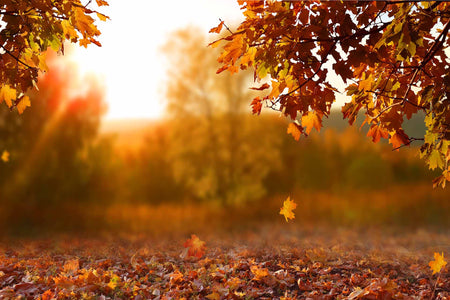- Spring allergies are most commonly triggered by tree, grass, and weed pollen.
- Common symptoms include sneezing, a runny or stuffy nose, itchy or watery eyes, and coughing.
- Treatment options include oral antihistamines, nasal sprays and eye drops. Immunotherapy may also be recommended.
Many of us enjoy the warmth and vibrant colors that spring brings. But for many people, this season also triggers sneezing, itchy eyes, and constant discomfort [*]. Spring allergies are triggered by the release of pollen from various plants in preparation for new growth and reproduction.
This article explains the timeline of spring allergies, their main culprits, symptoms, diagnosis, and treatment. We’ll also guide you through a list of practices to implement at home for better symptom management.
When Do Spring Allergies Start and End?
Spring allergies typically begin in early to mid-March and can last through late May. For many people, symptoms start when trees begin to bloom, which can vary depending on your location.
Generally, tree pollen is most prevalent during these months:
- Early to Mid-March: Symptoms often begin as trees start to bloom.
- March to May: Tree pollen is most common in the Northern Hemisphere.
However, the exact timing can differ based on your region and the specific allergens affecting you. In warmer climates, you might experience spring allergies as early as February, while in cooler climates, they may not start until April.
If you're also sensitive to grass or weed pollen, you might find that your allergy symptoms extend into:
Late June to Early July: As grass and weed pollen have their own peak seasons.
What Causes Spring Allergies?
Spring allergies are primarily caused by increased levels of pollen in the air. Here’s a closer look at the main culprits:
- Trees. Common tree pollens include those from oak, birch, maple, and cedar. These trees release pollen during their blooming season, which typically occurs from March to May.
- Grass. Grass pollen is another major allergen that can cause symptoms from late spring to early summer. Grasses like Bermuda, Timothy, and Kentucky bluegrass release large amounts of pollen during their peak season, which usually spans from May to June.
- Weed. Common weeds that produce allergenic pollen include ragweed, sagebrush, and pigweed. Ragweed pollen, in particular, can travel long distances and is a significant trigger for many people. The peak of ragweed pollen season typically occurs in late summer and early fall. However, ragweed plants can continue to produce pollen until the first frost of the season, which means that allergy symptoms can persist for an extended period [*].
- Mold. Mold spores can also contribute to spring allergies, although they are more prevalent in damp or humid conditions. Outdoor molds thrive in decaying leaves, compost piles, and other organic matter.
It’s important to be aware that even if there aren’t many plants producing pollen in your immediate area, you could still be exposed to high levels of pollen from plants located far away.
Spring Allergies Symptoms
When you inhale pollen, your immune system mistakenly identifies it as a harmful substance. In response, it releases chemicals like histamine to protect your body, and histamine is a key player in allergic reactions.
Common symptoms of spring allergies include:
- Sneezing
- Runny or stuffy nose
- Itchy or watery eyes
- Scratchy throat
- Coughing
- Fatigue
These symptoms collectively indicate that your body is reacting to the pollen and other allergens prevalent during the spring season. Report them to your doctor, who can recommend appropriate treatments.
How are Spring Allergies Diagnosed?
Your doctor will start by asking about your symptoms, including their onset, duration, and severity. They’ll also inquire about any potential triggers, such as exposure to pollen, and your personal and family medical history of allergies or asthma.
To pinpoint specific allergens, your doctor may recommend these tests: a skin prick test, which involves placing small amounts of potential allergens on your skin, or a blood test to measure the level of allergy-related antibodies in your blood.
How to Treat Spring Allergies
Treatments for spring allergies can include both medication and home remedies for comprehensive relief. Remember that it’s best to consult with a healthcare professional to determine the most appropriate treatment plan.
Common treatments for spring allergies include:
Oral Antihistamines
Oral antihistamines are often used for managing spring allergies. They work by blocking histamine, a chemical released by the immune system during an allergic reaction. When you take them, they prevent histamines from binding to receptors in your body, which reduces symptoms like sneezing, itching, and runny nose. However, since oral antihistamines go everywhere in the body and are not targeting the root problem, which is the nose, they tend to cause more side effects and are not as effective as nasal sprays.
For mild to moderate symptoms, second or third-generation antihistamines are typically sufficient, and preferable since they are less likely to induce side-effects such as drowsiness.
Nasal sprays
Nasal sprays are believed by most allergists to be more effective for treating spring allergies because they target the nasal passages directly, where allergens cause inflammation. As a result, they ease symptoms like congestion and a runny nose.
There are different types of nasal sprays, including steroid sprays, which reduce inflammation, and antihistamine sprays, which block allergic reactions.
Saline nasal sprays, for instance, help flush out allergens and mucus from the nasal passages, which then offers relief from irritation, but they do not reduce swelling or itching symptoms.
Other nasal sprays combine an antihistamine, decongestant, and other medications for optimal relief. Allermi is an all-in-one solution that combines both fast-acting and slow-acting ingredients, which allows for noticeable improvements in a shorter time.
Related: How to Use Nasal Sprays Correctly
Eye drops
Allergy eye drops are formulated to soothe irritated eyes and reduce inflammation caused by spring allergens. They work by targeting the symptoms of itching, redness, and watering caused by these allergens. However, for environmental allergies the eye symptoms are often an extension of the inflammation from the inside of the nose spreading to the eyes, and so we believe that nasal sprays are more effective than eye drops because they treat the root problem and not just cover up symptoms.
Many allergy eye drops contain antihistamines, mast cell stabilizers, or other medications that block the allergic response in the eyes for quick relief.
Immunotherapy
Immunotherapy helps treat spring allergies by gradually building up your body’s tolerance to allergens over time. It involves receiving regular doses of the allergen, either through allergy shots or under-the-tongue tablets, which helps your immune system get used to the substance.
It is typically recommended for individuals with moderate to severe allergies that are not well-controlled with standard treatments, or for those who want a long-term solution. However, most allergy shot programs will require almost a year to take effect, so may patients on allergy immunotherapy will need nasal sprays or other medications concurrently for the first year or so.
Tips to Combat Spring Allergies
To help manage and reduce the impact of spring allergies, consider incorporating these strategies into your routine:
- Check daily pollen forecasts and try to stay indoors when counts are high.
- Keep windows shut in your home and car to prevent pollen from entering.
- Shower and change your clothes after spending time outside.
- Use HEPA air purifiers for your home to help trap pollen and other allergens.
- Dust and vacuum frequently.
- Regularly wash bedding, pillowcases, and curtains.
- Stay hydrated to help keep mucus thin and reduce nasal congestion.
- Rinse your nasal passages with saline solution.
- Stay on top of your prescribed treatment protocol.
Related: Spring Cleaning Checklist
When to See a Doctor for Spring Allergies
If your allergy symptoms are severe, persistent, or significantly impact your daily life, such as interfering with your ability to work, sleep, or engage in normal activities, it’s time to consult a healthcare professional.
Worsening or chronic symptoms (meaning, they persist throughout the allergy season or year-round despite your efforts) are also reasons to seek prompt medical advice.
If you have a history of allergies or have previously been diagnosed, consulting a doctor before symptoms become problematic during spring can help you develop a proactive management plan.
The Bottom Line
Spring allergies can be an annual struggle, but understanding the causes, symptoms, and available treatments allows you to better manage them. Consider using a nasal spray, which treats the root problem.
References:
- Allergy Facts. (2024, April 19). Asthma & Allergy Foundation of America. https://aafa.org/allergies/allergy-facts/
- Climate Change Indicators: Ragweed Pollen Season | US EPA. (2024, June 27). US EPA. https://www.epa.gov/climate-indicators/climate-change-indicators-ragweed-pollen-season
- Fein, M. N., Fischer, D. A., O’Keefe, A. W., & Sussman, G. L. (2019). CSACI position statement: Newer generation H1-antihistamines are safer than first-generation H1-antihistamines and should be the first-line antihistamines for the treatment of allergic rhinitis and urticaria. Allergy Asthma and Clinical Immunology, 15(1). https://doi.org/10.1186/s13223-019-0375-9










